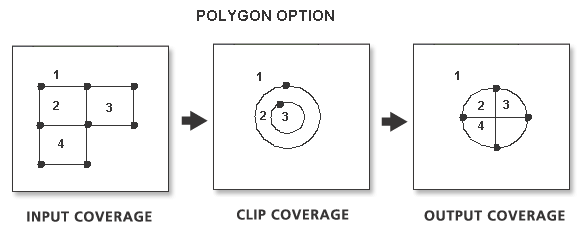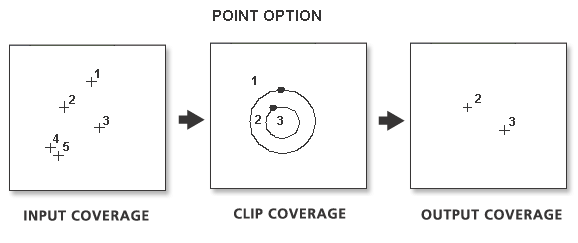The Clip tool creates a new coverage by overlaying two sets of features. The polygons of the Clip Coverage define the clipping region. Clip uses the clipping region as a cookie cutter; only those input coverage features that are within the clipping region are stored in the output coverage.
Input coverage features can be polygons, lines, or points. Clip Coverage features must be polygons. Output coverage features are of the same class as the input coverage features. They are clipped to the outer boundary of the Clip Coverage, and topology is rebuilt for the output coverage.



The feature attribute table for the output coverage contains the same items as the input coverage attribute table. The feature internal number is used to transfer attribute information from the input coverage to the output coverage.
The Erase tool is similar to Clip, except that input coverage features that overlap the Clip Coverage are erased instead of preserved.
Feedback on this topic?